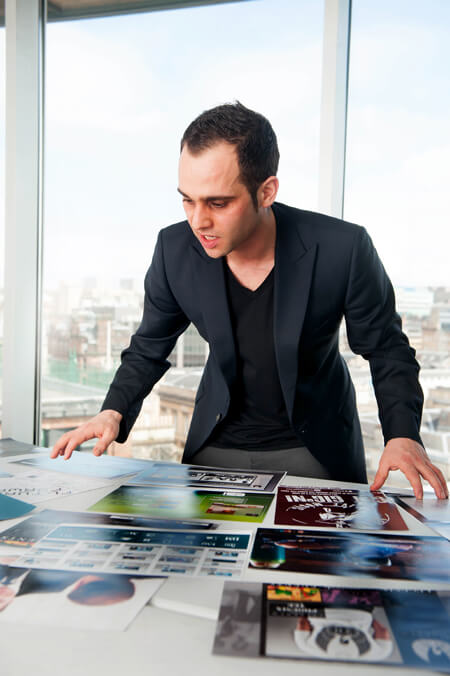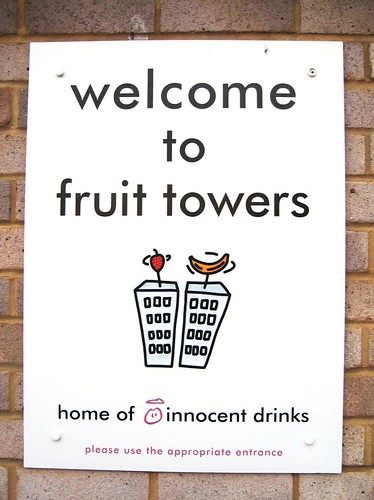I think in a few years time when I look back on the loft and its journey; this last week will be one that lingers in the memory. There were SO many important events this week I wouldn’t even know where to start. But I am going to select three and try to join the dots as I go along.
On Monday, I had a very interesting meeting with a partner in a large law firm. We are working more and more with professional service firms and starting to create individual propositions to them each that better serves their needs. Loft Legal will be a specialist brand communication service for law firms looking to strengthen their brand in the marketplace. At this stage, we’re still talking it through with different people and seeing where our services can fit.
The meeting on Monday was hugely significant. When asking the legal partner about the company vision and values; not only did he know them off by heart but gave individual examples about how he had applied them in his legal work. This was fantastic, I was impressed by the passion and resourcefulness- my only question, as an aside, was why these examples weren’t more evident on their web-presence but I’ll get back to this part of the story later.
Onto the next related event…
Tuesday saw the release of the awe-inspiring ‘LaFerrari’ at the Geneva motor show – outrageous, dramatic, truly-beautiful. There are no words. I love the design of this car; Ferrari has made more ugly cars than beautiful ones in the last twenty years but this one is stunning. Above that the engineering is breathtaking. They’ve built a semi-hybrid powered car that will go to 60mph in less than 3 seconds, weighs less than 1300 kilos and laps Fiorano, the Ferrari test track more than 5 seconds quicker than its predecessor the Enzo. At first I thought, this car is 12 years in the making. But no it’s more than that – the pulling together of all the resources and expertise of a company means this car is 66 years in the making. 66 years of moving the game forward. Of using its pedigree in racing to build faster cars.
How do they continue to do this?
Innovation.
What fuels this innovation?
Passion.
Ferrari is a small company, tiny on the grand scheme of things. They do not have limitless resources. But Ferrari behaves more like ‘a cause’ than a company. Everybody at Ferrari knows what the company is about and they do a fantastic job of getting this vision across. One of the great aspects of small companies is the compactness of the organisation. The sense of a shared purpose. ‘LaFerrari’ has one or two big innovations but the main body of work is in the details. Thousands of small, iterative details that have been lovingly created to build something out of this world. Collectively they all combine to help form something incredible.
Its innovation and passion that lies at the heart of a number of companies – those are also the ones that happen to have the strongest brands in the marketplace.
Coincidentally, this was further confirmed on Thursday when Paul Fletcher of Edinburgh University put together a strong presentation on that very subject at Thursday mornings Comms Breakfast. He spoke of the problems with companies being overly-results focussed and why ‘innovation’ is the only way to climb ourselves out of difficult times. But he also spoke of the issues with innovators – difficult to manage or control, disruptive, etc. He even went as far as stating that nobody in the room would have had the patience to deal with a young Steve Jobs in their companies.
Difficult to believe as that is.
Innovation in itself is difficult to do but I was delighted that he agreed afterwards with my analysis that innovation is fuelled by passion. And that it has to be fostered from the people at the top. The relentless march of progress is driven by people that love what they do and strive for better. It’s present in all of the great causes of our time and is the invisible hand that enables people to drive companies forward.
Which takes me back to Monday’s meeting.
I am afraid to say that I was unsure if the legal sector would be a good fit for the loft. I was delighted to hear that there are culturally aware firms that were enacting on their vision. I have been saying for a long time that to build stronger brands; Behaviour is more important than words. In this meeting, the passion was evident. Passion which is sometimes difficult to see with legal firms. Imagine the possibilities if you could leverage the entire workforce – all of the junior associates, trainees, partners, managing partners, strategic partners to innovate on behalf of a company’s vision and values? Furthermore, imagine if you could leverage the entire company to communicate this online or offline.
From a ‘brand’ point of view. what can be stronger than a passionate 200-300+ brand advocates enthusiastically articulating the company message at events, dinners, when speaking with family and friends, online?
Call it advocacy, call it internal marketing, call it whatever but it’s a tremendous opportunity. I only realised on Monday that we may have an opening for ‘Loft-Legal’ and it lies in this area. Having vision is important but it has to be articulated properly. It has to be crystal clear – it’s what the likes of Ferrari do very well. But not just big multinationals you’ll find this sense of purpose in restaurants, engineering firms, charities, etc. They may not use our words – brand, vision, values etc but it’s definitely there. This is an area we can definitely help.
My company is ‘design with soul.’ But what is becoming apparent is we need the ‘soul’ bit to come from the client to do great work. What was most exciting about Monday was that we can build a service and proposition with the loft potentially innovating on our own vision. Doing something innovative and delivering something of additional value to clients. Traditional design channels work remains incredibly important – photography, fonts, graphics, motifs, messages etc. We’re amongst the very best at it but I realise that we operate in a hugely competitive marketplace and we must continue to innovate to build a better business.
Through the Finance Gap, we’ve got designs on advocacy too. But that’s a story for another day. Like I said, it’s one of those weeks I think I’ll look back on as a significant turning point. Loft Legal has the potential to make an impact for both legal firms, but other professional services too.
Watch this space.
Benedetto
About the Author
Creative Director of the loft.
Benedetto runs the creative design consultancy, the loft. Based in the centre of Glasgow, the loft creates emotionally engaging brand identities.
Benedetto began his design career aged 9, sketching cars in the loft bedroom of his parents house. Even then he realised some eternal truths. Alfa Romeos are infinitely cooler than Ferraris and always have been. Time has only hardened this opinion. Since then, he has been on a journey taking him from his hometown in Kilmarnock to Coventry, studying car design aged 17, three separate spells in Italy followed where he interned, worked & freelanced for distinguished design companies – BeeStudio, Alfa Romeo, Honda Advanced design & Stile Bertone.
Setting up his own business was a natural step for somebody as independently minded as Benedetto. The loft was set up in 2008 and offers a comprehensive branding and communication service to its clients. The company combines a deeply analytical approach into the clients culture and commercial targets before engaging in creative design work to build emotive brands.







